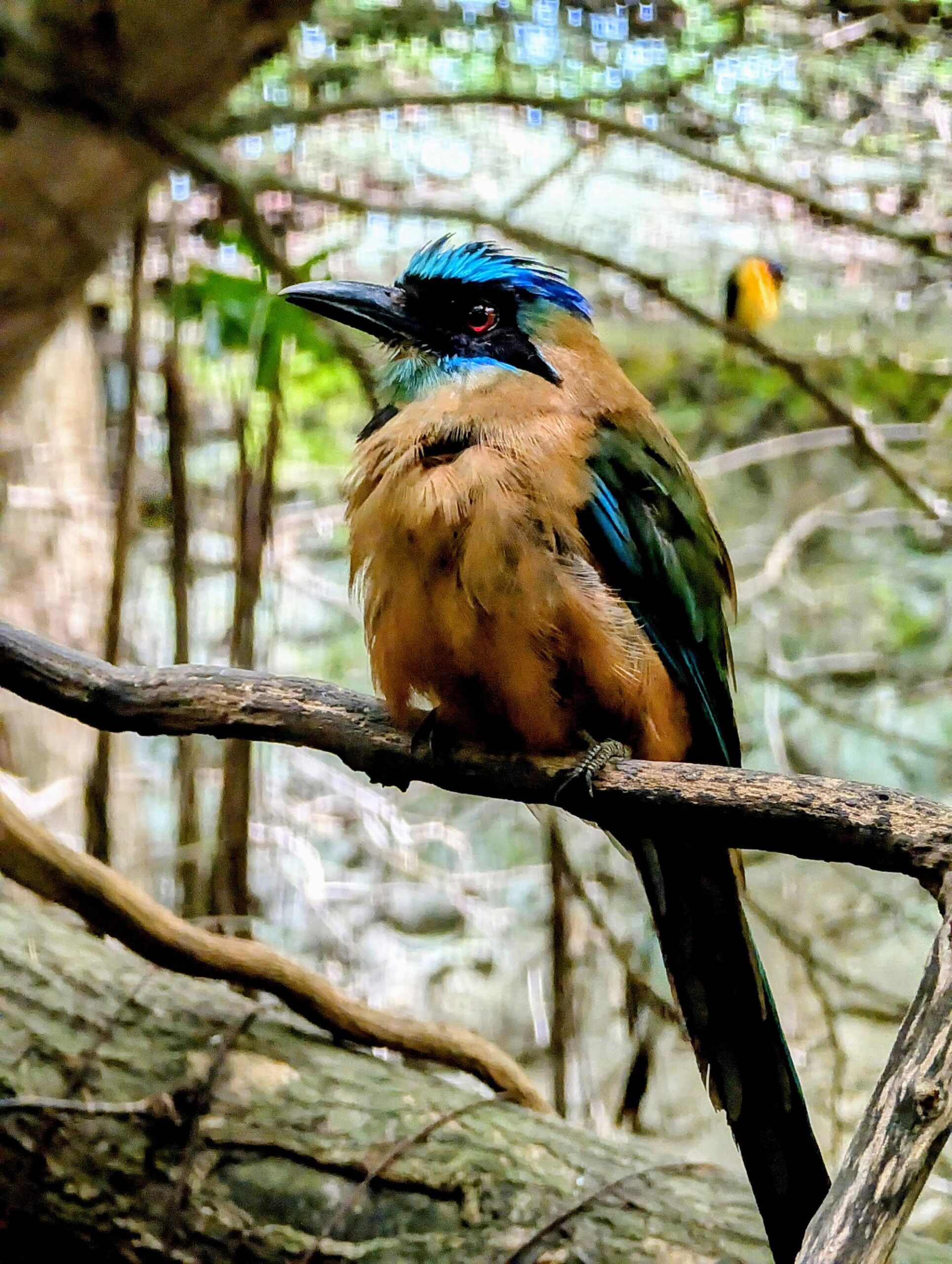Introduction
The Blue-capped Motmot (Momotus coeruliceps), also known as the blue-crowned motmot, stands out as one of the most colorful and intriguing birds native to the forests and woodlands of eastern Mexico. Renowned for its vibrant plumage and distinctive behaviors, this bird has fascinated ornithologists and nature lovers alike.
Appearance and Identification
- Plumage: The blue-capped motmot is adorned with spectacular shades of green and blue. It features a unique turquoise or blue crown, contrasted by a black mask on its face and striking red eyes. The bird’s nape is often chestnut-colored, and its body transitions from green to olive brown on the upper parts, with softer hues beneath.
- Tail: This species is recognized by its long, racket-shaped tail feathers, which often appear to have bare shafts at the tip—an effect created through preening or abrasion. During rest, the motmot sometimes wags its tail back and forth like a pendulum, a behavior characteristic of the family Momotidae.
- Size: Adults usually measure 38–43cm (15–17in) in length.
Habitat and Range
The blue-capped motmot is primarily found in forests, woodlands, and the edges of rainforests in eastern Mexico. It prefers habitats near water sources, such as streams and rivers, where it can drink and bathe. These birds are often seen in dense foliage, gardens, and shaded coffee farms, making them adept at blending into their surroundings despite their vivid colors.
Behavior and Diet
- Feeding: Blue-capped motmots are omnivorous. Their diet includes insects, lizards, earthworms, snails, small vertebrates, and fruit. They are known as “sit-and-wait” predators, catching prey from low perches and sometimes hitting larger prey against a branch or the ground before consuming it.
- Vocalizations: The call is a distinctive, low, double “hoot” reminiscent of an owl, most frequently heard during dawn or early morning hours.
- Nesting: Like other motmots, this species excavates nesting tunnels in banks or soft earth. Both parents take turns digging the burrow, which can reach up to 14ft long, and share incubation and chick-rearing duties. Clutches usually consist of three or four round, white eggs.
Conservation Status
Though not considered globally threatened, the blue-capped motmot’s preference for forested habitats means it is sensitive to deforestation and environmental change. Conservation efforts to preserve its woodland environment are key to ensuring its continued presence in the region.
Conclusion
With its dazzling plumage, unique tail, and secretive habits, the blue-capped motmot remains one of Mexico’s avian treasures. Spotting one is a memorable highlight for any birdwatcher or nature enthusiast exploring the forests of eastern Mexico.

Leave a Reply